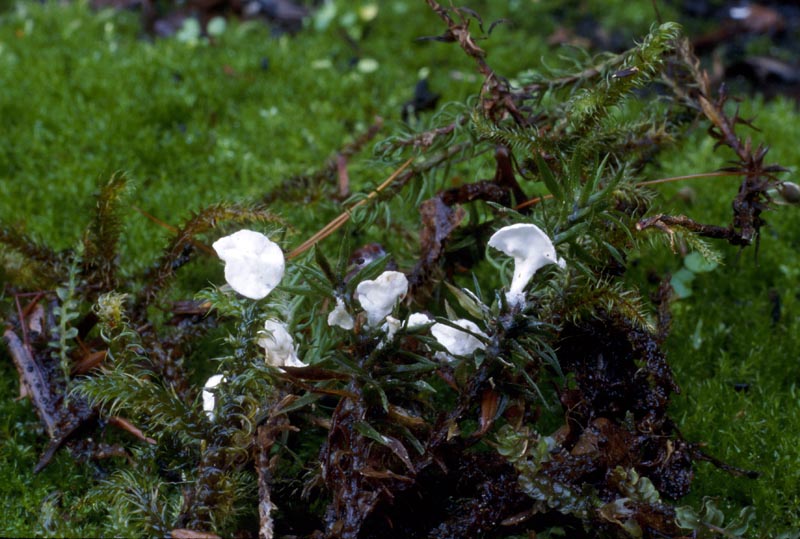Page author: Wynn Tranfield
Cyphellostereum laeve
Substrate: It occurs on mosses, usually hair caps (Polytrichum spp.) and is common in late summer and fall in our moist conifer forests, especially along trails and other areas where mossbeds are found.
Spores: colorless, non-amyloid, smooth, rounded, and 4--5 x 2.5--3 μm
Conservation Status: Not of concern
Description:
Identification Notes:
The tiny basidiomycete Cyphellostereum laeve forms whitish spoon- to irregular-shaped, thin, soft fruitbodies with spores produced on the undersurface.
Accepted Name:
Cyphellostereum laeve (Fr.) D.A. Reid
Synonyms & Misapplications:
(none provided)
Additional Resources:
PNW Herbaria: Specimen records of Cyphellostereum laeve in the Consortium of Pacific Northwest Herbaria database
CalPhotos: Cyphellostereum laeve photos
1 photographs:
Group by



